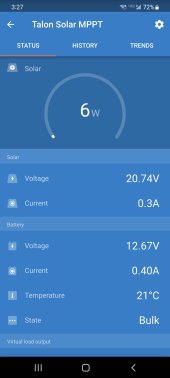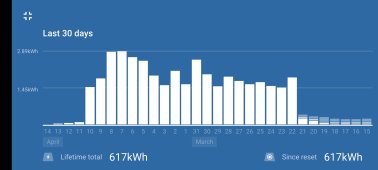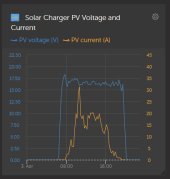Uoavitar
Boondocker
- Joined
- Jan 25, 2021
- Messages
- 87
I've been using a SmartSolar MPPT 150/85-Tr VE.Can for a little under 2 years now and 3 days ago, around the same time I updated the firmware, it stopped charging. I would get 10-45 amps of charging depending on the weather. Last Monday it only got up to .2 amps. At first I didn't think anything of it as it was a partly cloudy day. Then everyday since has been about the same sun or shine. I check all my PV connections and everything checked out. I decided to try a power supply set at 21v with a 5 amp max and it still would only do about .2 amps. I'm almost certain it's the controller. Has anyone else had anything similar happen? How is Victron with their warranties? I purchased it from invertersupply.com on 4-23-2020, I believe it's still under warranty.












